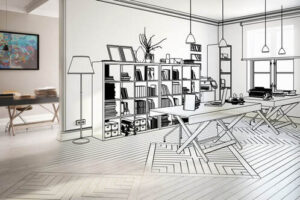
It makes sense that some investors seek higher class properties to protect their downside in an economic downturn. However, from our vantage point, higher vacancy rates are found in luxury properties during a recession than in workforce housing. The reason is that people need a place to live at all times during the economic cycle, no matter what their financial circumstances. For most people who are going to stay in their general area, the price of rent will be a major factor in determining where they go or why they stay.
Operators of B/C properties can keep their rents low and keep their buildings full during a recession, as workforce renters would generally not be able to afford Class A units. On the other hand, Class A units in the neighborhood may elevate the value of B/C properties. For example, where charging $1.00 to $1.20 per square foot for rent, owners of newly constructed Class A properties need to charge a minimum of $2.50 per square foot to earn a profit. If rents are slightly raised by $.10 or $.20 per square foot, B/C property owners are more than satisfied and still have plenty of headroom before a tenant would compare facilities to the nearby Class A property.
According to the National Association of REALTOR, the demand for multifamily properties, especially class B/C, and rents will likely increase in the next 12 months. The large but temporary loss of jobs in the food service, housekeeping, and personal care industries has an impact on the multifamily market because workers in this sector are more likely to be renters compared to other occupational groups. Class B/C properties that are more affordable will tend to be in higher demand than Class A as households work through improving their financial positions.
From the Interiors perspective, operators who believe they can raise rents by upgrading unit and common area interiors are on the right track – mostly. It’s not possible that every property has the same value-add potential. And working with properties that have been held by the seller for more than five years implies that the seller has a significantly lower cost basis and does not have as much incentive to push rents to the top of the market. On the other hand, sellers who are flipping the property in one to three years are eager to complete upgrades and push rents until a point where there is no more room to grow without the market rising on a macro level. This process requires experienced commercial interior designers to identify what value-add improvements can be made to the interiors of the apartments and community areas in order to bring the rents up to the current market levels.
In an industry built on margins, any efficiencies gained or disasters avoided can dictate the underlying success of investments. Inviting Mood Interior Designs to join our client’s Deal Team when acquiring or evaluating property interiors creates valuable scalability to investors’ return on investment. The initial data points uncovered guide the client’s operational strategies and shape their capital budgets over the duration of the projected hold period.
The operational due diligence investment provides the opportunity to take a deep dive into the static, in-place operations utilized by the existing ownership, distinguish strengths from weaknesses while identifying potential upside. This includes fine tuning assumptions relating to capital improvement projects, tenant improvement allowances, renewal probabilities, preleasing, value-add opportunities, and more.
To learn more about how Mood Interior Designs can help you identify your property’s interiors financial strategy, please email info@moodinteriordesigns.com. With clients around the country, we’ve worked with companies of every size, allowing us the versatility and knowledge to serve a diverse array of clients within the housing, corporate, commercial, and hospitality industries.
